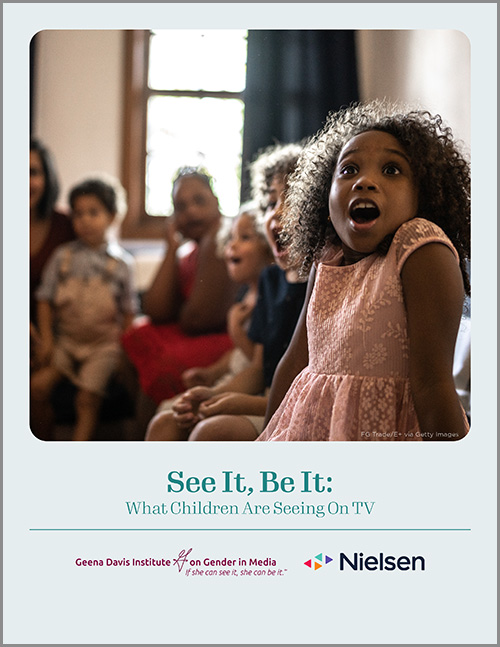
In our effort to continue to move the needle, we analyzed the inclusion and representation of six groups (women, people of color, queer people, people with disabilities, people ages 50 and older, and people who are fat) in two different types of media content. First, we looked at inclusion and representation in programming popular with children ages 2 to 11 according to Nielsen metrics, which includes the 10 most popular broadcast, cable, and streaming shows, inclusive of Spanish-language programming. Second, we analyzed inclusion and representation in current children’s programming, including shows that premiered in 2021 and shows that didn’t premiere in 2021 but were airing new seasons. In this full report, we look at differences in representation and inclusion within each type of media content, as well as compare across these formats. We refer to them as popular and current, and occasionally split out new content from current content.
Recommendations
Based on these findings, we make the following recommendations:
- Show more female characters in animated roles. Animated characters, especially nonhuman characters, were mostly male. Diversifying the genders of these nonhuman animated characters will provide more dynamic portrayals of female characters to audiences, and more opportunities to female actors and talent.
- Increase the visibility of queer characters of color. Queer characters (especially nonbinary characters) were more likely to be white or non-raced. Historically, the intersection of racism with homophobia and transphobia has led to the erasure of LGBTQIA+ people of color in the media, which can limit acceptance of queerness in communities of color. For LGBTQIA+ roles, consider intersectional representation by increasing portrayals of queer communities of color.
- Diversify racialized animated characters. Over one-third of characters with an implied race were suggested to be Black. Animation has a long history of appropriating Black culture as well as making Black characters nonhuman. It is important that young children of all races see Black characters on television. Therefore, for Black characters, consider roles that are explicitly Black. And among characters with an implied race, incorporate a broader array of cultures.
- Give disabled characters dynamic and complex narratives. Characters with disabilities were rarely shown, were not in leading roles, and had almost no romantic attachments. The failure to acknowledge the complex lives of disabled people leads to portrayals that rest on their disability. Further, children with disabilities do not get to see themselves on screen. Disability representation can be increased without reducing disabled characters to their disability.
- Allow characters of all genders to be unapologetically fat. Male characters were more likely than female characters to be fat. Gender inequality in body-size diversity contributes to harmful double standards, with boys and men granted more leeway than girls and women in their physical stature and size. Fatphobia is incredibly harmful, and children can benefit significantly from seeing characters of all genders who are fat and also likable, attractive, funny, athletic, and dynamic, where their size is not the source of ridicule, motivation, or shame.
Photo credit: FG Trade/E+ via Getty Images
